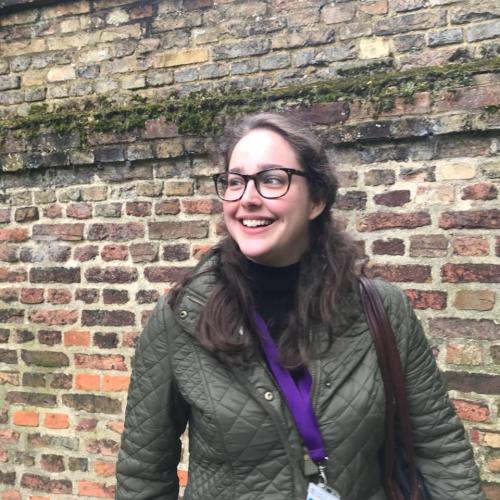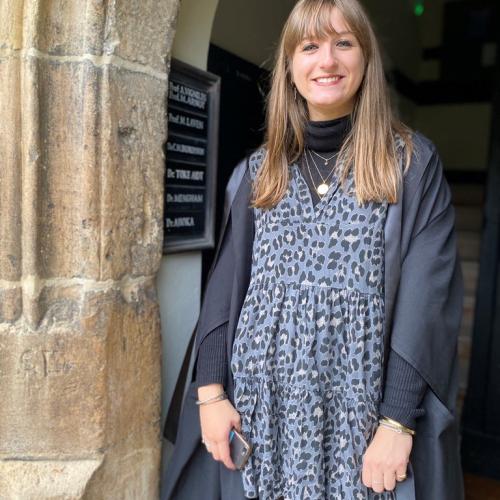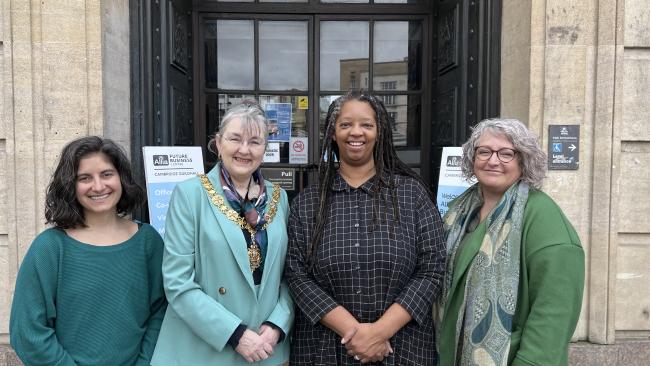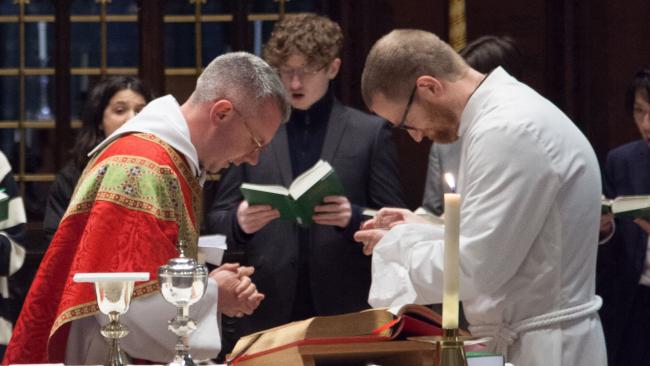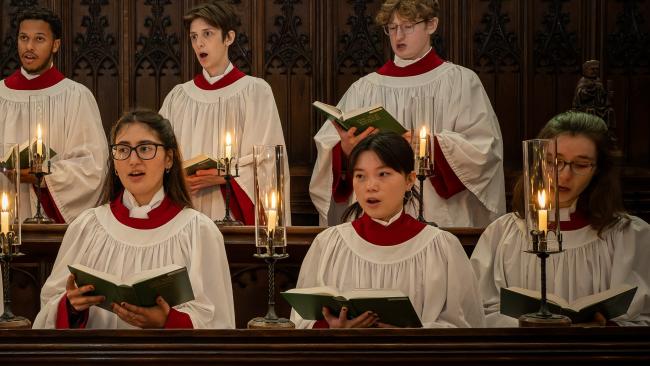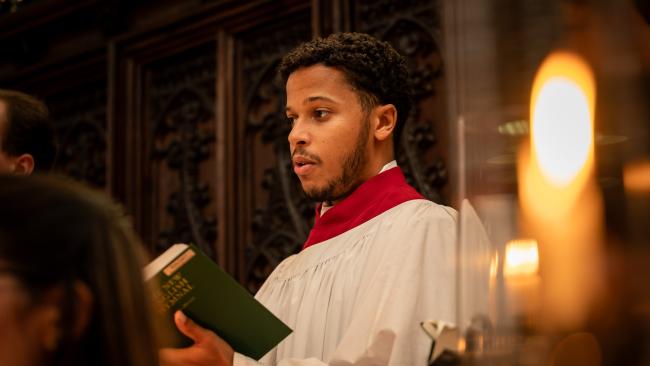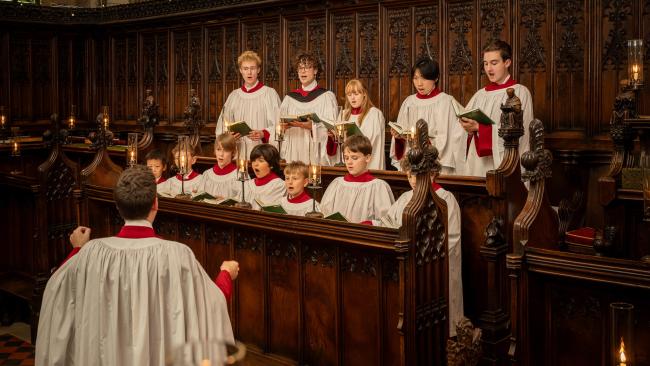
College architecture
Jesus College's spacious site provides a peaceful setting for buildings of every era from the 12th century to the 21st.
The site on which Jesus College now stands lay outside the town of Cambridge in the mid 12th century, when the existence of the "nuns of Grenecroft" is first recorded.
Their priory gradually accumulated gifts of land to make up a substantial plot, extending south as far as the present King Street and north to what is now called Jesus Ditch. At the end of the 15th century the College took over all the priory's former property.
Gate Tower and First Court
The long paved, walled path from Jesus Lane to the Gatehouse is known as "the Chimney". The explanation may lie in the fact that the Gate Tower was once crowned by ornate brick chimneys. It has also been suggested that the term might derive from the French ‘cheminée’, which was simply the word for a path. The route of this main entrance to the site was the same in the time of the priory, but the brick walls on either side date from later centuries.
The Gate Tower was built when the College was founded, when the dilapidated priory buildings were remodelled and faced with the present light red brick. Above the gateway arch are the arms of King Henry VII, who authorised the founding of the College, with those of the diocese of Ely and of the College's founder Bishop Alcock. In the niche above is a more recent statue of Alcock.
Passing through the Gatehouse into First Court, visitors will see on their left the 16th century range that originally housed the College's grammar school. Opposite is a similar range built in the 1630s, which was largely funded through an appeal to former members of the College.
To the right are the buildings around Cloister Court, with some of the stained glass windows of the Old Library visible on the top floor. Opposite those, on the western side of the court, is the green space known as the Orchard, now planted with ornamental specimens rather than fruit trees.
Cloister Court and the Chapel
A passage through an archway gives access to the ancient central heart of the site. This preserves the layout of the priory, which had a cloister beside its church, a refectory on the other side of the court, and a chapter house on the eastern side. It is the only court of the College which is completely enclosed on all four sides.
The cloister was unusual in that it lay on the north side of the church rather than the south. The exact reason for this is unknown, but there may once have been an idea that a double monastery could be established here, with buildings for occupation by monks on the south side. The cloisters were altered when the College was founded, with an aisle of the church being replaced by a section of cloister. They were rebuilt with their present open arches (rather than windows) in the 18th century.
A 13th century arched doorway and two windows remain from the priory chapter house, having been rediscovered in the cloister wall and left on display in 1893. Further fragments of medieval masonry can be seen in the room beyond after being revealed during a recent refurbishment.
While the floor level of the whole priory was lower than the present ground level - as you can see from the present steps down into the Chapel - the chapter house floor seems to have been deliberately lowered again to increase the height of the room without changing the level of the dorter (the nuns' dormitory) above.
The priory church was converted into the College Chapel, and the end of the nave was cut off to allow for the creation of a Master's Lodge. This was extended around 1720, as part of work that made the south range of First Court a full three storeys high. It was refashioned again in the 1880s, supervised by architects Carpenter and Ingelow.
The adjoining range, once occupied by the Prioress, now houses rooms used for meetings and College events. The Old Library - the original College library, completed as a new room in the early years of the 16th century - is on the top floor.
Pump Court and Second Court
Leaving the cloisters by the stone passageway in the corner closest to the Chapter House arches, you will arrive in Pump Court. The origin of the name is not difficult to spot: a small area lying near to the College kitchens, it housed a pump for supplying water. The other main feature is a small garden laid out in honour of St Radegund, with fruit trees and other plants that would have been known to her.
The area beyond it became known as Second Court following the construction of the Waterhouse Building in 1869-70. Named for its architect, the Gothic revivalist Alfred Waterhouse, the red brick block contained four staircases of student rooms.
Before it was built, this part of the site was occupied by storerooms and other outbuildings. Afterwards, a formal garden was laid out between the new building and the back of the 1638 range opposite, but from this only a few clipped yew trees survive.
West Court
The land upon which the former Wesley House stands was sold to a Methodist church trust by the College in 1922. A training college for Methodist ministers was built there, with the main building - in red brick and with two wings - designed by architect Maurice Everett Webb.
We now know that the main range of this building was supported on a concrete bridge to enable it to span a section of the town's medieval King's Ditch. In the 1970s the street frontage on Jesus Lane was filled in with a new building in a contemporary style.
The College has recently acquired these buildings, leasing a portion of the site back to the Methodist church for their continuing use. A major programme of refurbishment and improvement is in progress, part of which is designed to enhance the appearance of the Jesus Lane frontage. As its name suggests, the internal route to the new court proceeds westward from the College's main entrance, through the Orchard.
North Court
Standing between the Orchard and the Grove, North Court was built between 1963 and 1965 to accommodate the increasing number of students and Fellows coming to the College following the 1944 Education Act.
It was designed by the architect David Wyn Roberts, along with many other Cambridge buildings. It replaced the late 19th century North House, the twin of East House (which has survived). Both were built as tutors' houses in the 1880s and were no longer required for that purpose after the Second World War.
The new North Court is radically different from what went before, though with rooms set diagonally to one another it echoes the alignment of the 17th century chimneys facing it across the lawns. A facing of handmade buff brick conceals its concrete skeleton.
Much admired when it was new, it achieved Grade II listed status in 1993. Substantial refurbishment and complete interior remodelling was undertaken in 2005, and it now contains around 80 student rooms.
Chapel Court
Chapel Court lies to the east of Cloister Court and Second Court, and can be reached through passageways from either.
Until the 1880s it was an empty green space, labelled "Master's Paddock" on a plan of 1850. It began to be developed as a new court when the Carpenter Building was constructed in 1885-6. Made from dark red brick, this was designed by the architect Richard Herbert Carpenter to house student accommodation.
Chapel Court has a central gatehouse tower which is sometimes known as Boatie Tower because it is where the Boat Club captain lives.
The new building was decorated with statues of St John, the Virgin Mary, and St Radegund made by John Webb Singer of Frome, working with his sons Herbert and Edgar.
St John was presented by the Master Henry Arthur Morgan, Mary by the Dean, Edward Morgan, and Henry's wife Charlotte Morgan led the list of subscribers for St Radegund, which was funded by donations from the wives and sisters of College members.
The three-sided structure of the court was completed during 1927-30, when a further supply of rooms for students and Fellows was provided in the Morley Horder Building. Again this was named for its architect, Percy Richard Morley Horder.
By this time the influence of the Victorian Gothic revival had waned, and Horder was guided by the principles of the arts and crafts movement. He employed a pale brick of a kind then common around Cambridge, but joined the new block to the existing Carpenter Building by means of a transitional section of intermediate colour, made of old bricks retrieved from one of the College's Suffolk farmhouses.
Library Court
Lying to the south of the Chapel and Chapel Court, Library Court contains the newest of the College's buildings. The Quincentenary Library was constructed first, occupying a site that was formerly the kitchen garden of the Master's Lodge.
It was funded by a combination of bequests and an appeal to former members, designed by architects Eldred Evans and David Shalev, and finished towards the end of 1995.
The undergraduate library (formerly known as the War Memorial Library and housed on A and B staircases in First Court) was able to move in well ahead of the formal opening, which took place in the quincentenary year of 1996. The building includes a computer centre for students.
An accommodation block by the same architects was built at right angles to the library in 2000. It uses the same pinkish-buff brick with stone detailing.
The Close and the Grove
The Close surrounding the buildings has been used in various ways: in earlier centuries it was often let out to people grazing livestock. The last of the animals disappeared about a hundred years ago, leaving the way clear for the development of better facilities for playing cricket (with a Pavilion built in 1924), football, hockey, and tennis.
To the north and east of the Close is an area of woodland known as the Grove. The College is marked as having "walks and groves" on the town plan included with John Speed's Cambridgeshire map of 1610, and in the late 18th century the young Coleridge wrote an ode about wandering in "Jesus wood". Today the path through the woodland is a nature trail.
